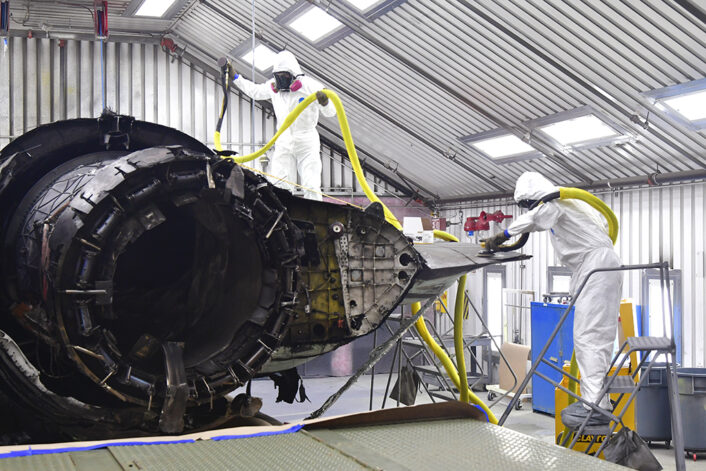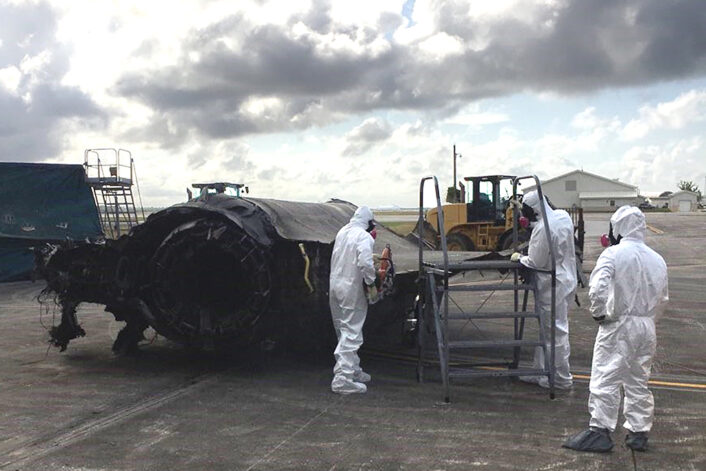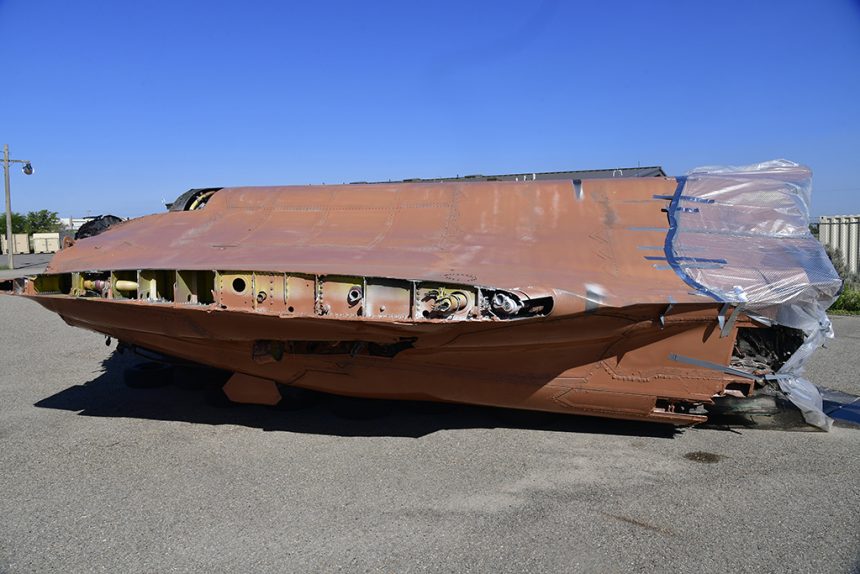Some parts of the F-35 involved in a landing mishap at Eglin Air Force Base will be used for instruction of F-35 maintainers.
On May 19, 2020, F-35A aircraft tail number 12-005053, operated by the 58th Fighter Squadron, 33rd Operations Group, assigned to the 33rd Fighter Wing, crashed 4,600 feet down the Runway 30 (slightly left of the centerline) at Eglin Air Force Base (AFB), Florida.
The pilot ejected safely from the aircraft (sustaining non-life threatening injuries) while the aircraft, valued at $175,983,949, rolled, caught fire, and was completely destroyed (you can read more about the causes of the mishap here).
Although it was initially thought to be scrapped, Airmen in the 372nd Training Squadron, Det. 3, at Hill AFB found a way for the aircraft (or what remained of it) to bolster maintenance training opportunities for military and civilian F-35 maintainers assigned to the base’s 388th Fighter Wing, 419th Fighter Wing, and Ogden Air Logistics Complex.
“Initially, the jet was to be scrapped and destroyed,” said Master Sgt. Andrew Wilkow, 372nd TRS in a public release. ”However, we explored the possibility that some parts such as avionics, fuel cell and gun system might still be in relative pristine condition inside the damaged crust and usable for training.”
In fact, some major components needed for the training aids were still usable.

“Obviously, accidents are unfortunate, but when it comes to aircraft involved in a mishap, I have always found that there is a silver lining and something to be gained,” Santos said. “In terms of the wreckage being recycled and used for other purposes, these kinds of innovative efforts save the DoD and taxpayers millions of dollars.”
Especially on pretty “young” fleets, maintenance training is usually carried out on frontline aircraft. However, this is not always doable, as most of times, jets requiring maintenance are to be immediately returned to flying status and can’t support training activities of ground personnel.

“Until now, maintenance training has been accomplished using operational aircraft,” said Tech. Sgt. Dennis Corcoran, 372nd TRS. “Obviously, this is a significant challenge because often units are unable to support training evolutions, simply due to operational commitments or the real-world need for jets requiring maintenance to be immediately returned to flying status, in order to maintain the squadron’s readiness requirements.”
Therefore, the aircraft was relocated to Hill in July and activities conducted in coordination with a U.S. Navy unit also interested in some of the aircraft’s components for test and evaluation. The project is expected to be completed during the next year.
First task to be completed, is to clean remove from the airframe all the potentially hazardous materials.
“Our shop is involved with removing contaminants, cleaning up any fluid or chemical residue, trimming off exposed burnt composites, and removing sharp edges or metal damage,” Tech. Sgt. Kevin Browning, 388th Maintenance Squadron NCOIC of corrosion control, said. “Then we prep and paint the components, so that they are safe to handle.”
The next phase of the project will include cutting the entire fuselage lengthwise and then into individual component sections. The sections will then be framed and mounted on stands to give maintainers as much access as possible to the training aids.
“The whole process has been a team effort from the beginning and only possible through the time, effort and cooperation put forth by many individual professionals throughout the Air Force, as well as many highly skilled Airmen, from multiple units across Hill Air Force Base,” Corcoran said.
By the way, the images released by the Air Force give an idea of the extent of the damage the aircraft suffered as a consequence of the accident. The fact they found something re-usable in that airframe looks like almost a miracle….
H/T to Ryan Chan for the heads-up!









